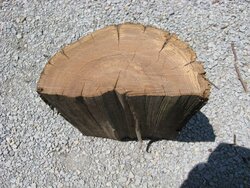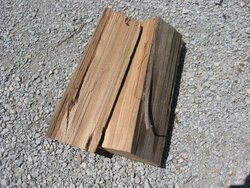farwood can only get so dry according to the local climate. I been tearing down this old barn that was built in 1875. There was a 14 foot buy 12 inch log that someone had split the entire lenght and used to shore up part of the haymow. I finally got it saftly cut and pulled out of the barn and took the saw to it.(Gasp for all those salvagers). The chips smelled of oak. Odd since there really isnt much oak growing in this neck of the woods and the entire barn is built outta cedar. Took a chunk to the splitter and tested it with my MM. I'm guessing from what I know about this barn and the repairs done at the time this log was shoehorned in the loft that it is at least 50 years old. The MM still read 17% moisture. It is very humid here in my neck of the woods so I can see it happening.








